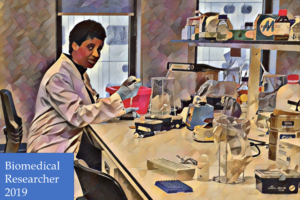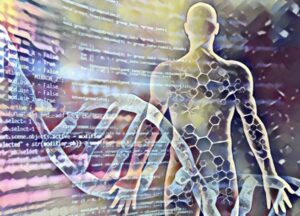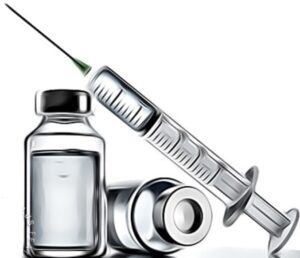Diarrhea Diseases: Traveller’s Diarrhea
As a traveller, have you ever had an unpleasant and embarrassing feeling of stomach rumbling, flatulence and wanting to pass stool so urgently in an unfamiliar environment that you ask anyone for a toilet closest to you? And then you end up passing watery stool accompanied by both flatulence and abdominal cramps of some sort and fever? The passing of stool occurs a couple of times per day, and eventually subsides after three to five days without medication but the unpleasant situation limits travel experience. This situation is especially true for many travellers to low and middle income countries (LMIC), and area with poor public hygiene. When this happens to travellers within one to three days of their trip, after consuming contaminated water or food it is called Travellers’ diarrhea1, 2.
Travellers’ diarrhea may be caused by stress of travelling or change in diet but, when ingestion of contaminated food or water is involved it can be caused by infectious agents such has bacteria, viruses or parasites. The risk of traveller’s diarrhea caused by stress of travelling, can be reduced by resting after arrival and eating familiar simple food as a first meal. For traveller diarrhea caused by an infectious agent, you may wait for it to subside by itself or see a doctor immediately for medication if severe; especially to prevent dehydration. Causes and treatment of bacteria has an infectious agent of travellers’ diarrhea have been fully established1 , and I would like to share my knowledge on this subject with a focus on pathogenic Escherichia coli (E. coli) a bacteria that causes this type of diarrhea.
Bacteria: Escherichia coli (E.coli)
E.coli is a rod-shaped gram negative bacteria. This means that they do not retain the crystal violet stain used in bacteria differentiation, because it has an outer membrane composed of lipopolysaccharide (LPS) common to most gram negative bacteria. LPS activates the body’s immunity. They are facultative anaerobes, as they can make energy in the presence of oxygen (aerobic respiration) and absence of oxygen by fermentation. They are non-spore forming bacteria (coliform) and motile and are commonly found in the lower part of our intestine as commensal, meaning they are normally non-pathogenic. As commensals, they prevent the colonization of the intestine from other pathogenic bacteria and produce vitamins for the host, e.g. Vitamin K2, so not all E.coli in the intestine causes disease.
There are different types of bacteria genetic variants also called subtypes, serotypes or strain. Intestinal E.coli has its pathogenic strains that cause intestinal disease (click here for CNN video on E.coli infection)
Pathogenic E.coli
Types of pathogenic E.coli strains3:
- Enteroaggregative coli (EAEC)
- Enterohemorrhagic coli (EHEC)
- Enteroinvasive coli (EIEC)
- Enteropathogenic coli (EPEC)
- Enterotoxigenic coli (ETEC)
- Diffusely adherent E.coli (DAEC)
Pathogenic E.coli causes food poisoning and are partly responsible for food contamination incident that prompt product recalls or outbreak , like the E.coli outbreak reported of 2022 that was associated with lettuce consumption from Wendy’s restaurants as reported by nbcnews.com4. Exposure to pathogenic E.coli are through contaminated water or food especially raw vegetables such as lettuce and also person to person contact. Symptoms of E.coli infection can manifest within 24hrs of infection as mild to severe watery diarrhea, stomach pain and cramps including nausea and vomiting in some people. These symptoms can subside on their own within 3 to 5 days as the body heals itself. In young children and infant, this diarrhea can lead to death, and recurrent infection leads to impaired growth5. Please, contact your doctor if your diarrhea is severe and persist.
Pathogenic E.coli Toxins and vaccination
Pathogenic strain of E.coli strain produces powerful toxins that affect the intestinal physiology, for example, ETEC produces the heat-labile toxin (LT) and Heat-stable toxin (ST), that bind to intestinal cell receptors and cause an increase in intestinal luminal fluid flow their promoting diarrhea. It’s worth mentioning that ST resembles normal intestinal peptide (endogenous peptides: guanylin and uroguanylin) and tend to mimic the actions of these endogenous peptides, albeit more potently6.
Vaccine development for diarrheal disease attributed to ETEC is of high priority because it causes substantial illness and death predominantly in the infant population of low- and middle-income countries. This includes the negative impact on child growth and development. Sanitation in poor endemic areas are often not practical and sustainable, thus vaccination maybe most-cost effective method of preventing traveller’s diarrhea. One of the difficulty in E.coli vaccine development, is the development of specific molecules (immunogens) that can elicit immune responses against most pathogenic strains (Read my write-up on vaccination).
When the vaccine becomes available, a healthy tourist can go on vacation without fear of E.coli induced diarrhea and military personnel on deployment would be able to carry out their activity without interruption. I cannot begin to imagine the effect of E.coli infection can have on military personnels while under fire.
References
- Radoslav Danis, Martin Wawruch, Travellers’ diarrhoea – prevention, trends and role of microbiome,. Cent Eur J Public Health 2022 Mar; 30 (1) : 20-25. https://pubmed.ncbi.nlm.nih.gov/35421294/
- ERICA S. MEISENHEIMER, MD, MBA, CARLY EPSTEIN, DO, AND DERRICK THIEL. Acute Diarrhea in Adults, Am Fam Physician. 2022;106(1):72-80 https://www.aafp.org/pubs/afp/issues/2022/0700/acute-diarrhea.html
- Kaper, J., Nataro, J. & Mobley, H. Pathogenic Escherichia coli. Nat Rev Microbiol2, 123–140 (2004). https://doi.org/10.1038/nrmicro818
- Nbcnews: https://www.nbcnews.com/health/health-news/e-coli-outbreak-grows-wendys-customers-describe-food-poisoning-rcna44466
- Sheikh A, Tumala B, Vickers TJ, Martin JC, Rosa BA, Sabui S, Basu S, Simoes RD, Mitreva M, Storer C, Tyksen E, Head RD, Beatty W, Said HM, Fleckenstein JM. Enterotoxigenic Escherichia coli heat-labile toxin drives enteropathic changes in small intestinal epithelia. Nat Commun. 2022 Nov 12;13(1):6886. https://www.ncbi.nlm.nih.gov/pmc/articles/PMC9653437/
- Zegeye ED, Govasli ML, Sommerfelt H, Puntervoll P. Development of an enterotoxigenic Escherichia colivaccine based on the heat-stable toxin. Hum Vaccin Immunother. 2019;15(6):1379-1388. https://pubmed.ncbi.nlm.nih.gov/30081709/



